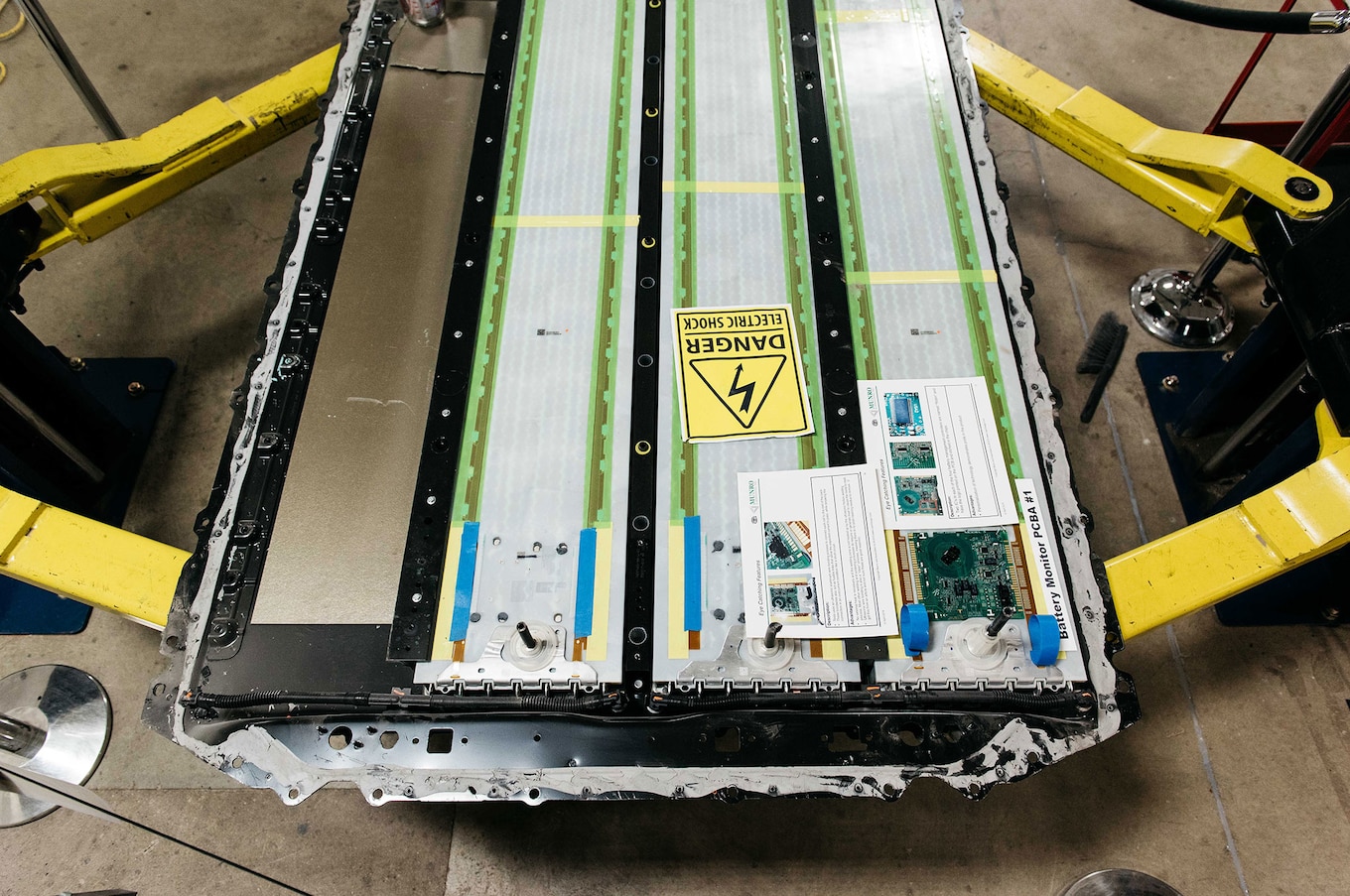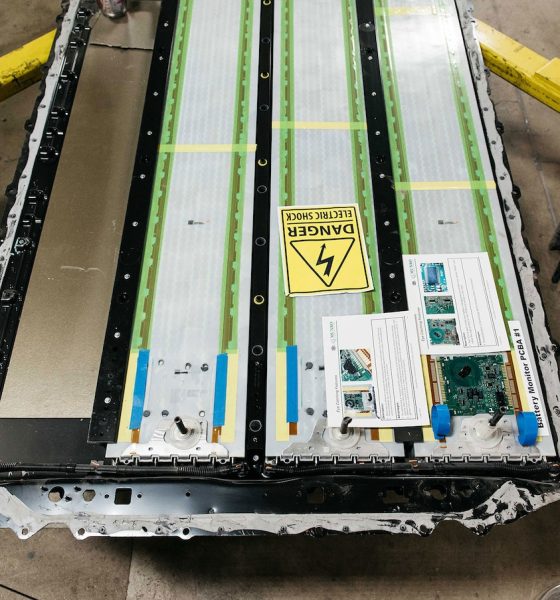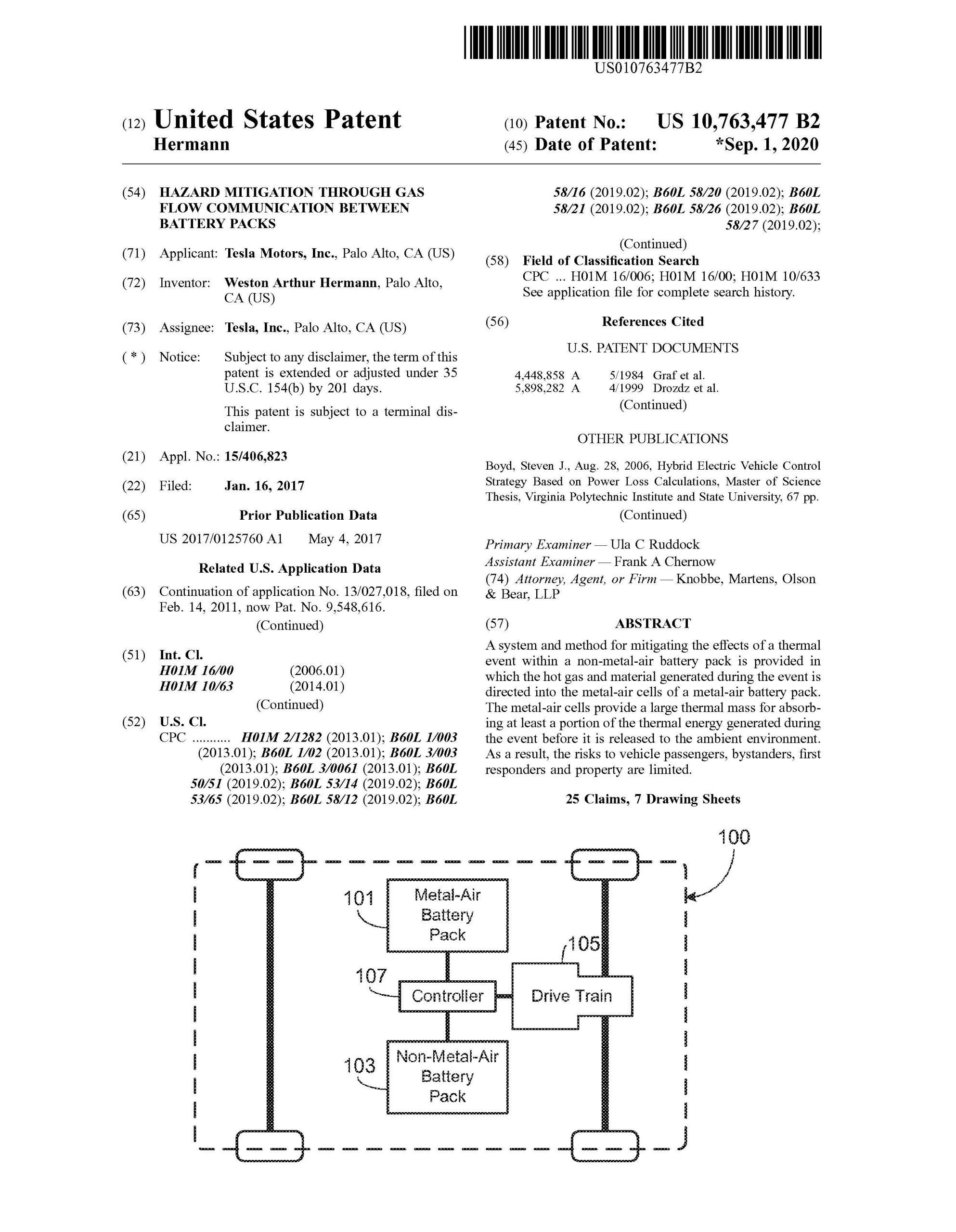

News
Tesla’s metal-air battery patent: Carpe ‘Battery’ Diem or yesterday’s news?
Tesla was recently granted a US patent titled, “Hazard mitigation through gas flow communication between battery packs,” and with the company’s Battery Day event around the corner, anything that may foretell what the revelations will be is seeing some serious consideration. Given that this invention describes a cooling process between a combined metal-air battery pack and non-metal-air battery pack, a first glance suggests that the patent is a Roadrunner-related hint. On this particular patent, though, there’s a bit of background to consider that might not indicate what the application title plus the patent’s publication date implies.
First, U.S. Patent No. 10,763,477 was issued on September 1, 2020, and Tesla’s Battery Day is September 22, 2020; however, the patent’s filing date goes back to January 16, 2017. When it comes to inventions at the US Patent and Trademark Office (USPTO), it’s not uncommon for the legal side of the patent process to take several years to complete, and there are few options available to speed up the process. But even these simple dates don’t tell the whole story on this patent’s timeline.
In addition to being several years in the making, this patent is a continuation of another patent (U.S. Patent No. 9,548,616) which was filed in 2011 with a provisional priority date in 2010. Considering the Model S’s debut took place in June 2012, it would seem that hopes of metal-air batteries getting a Battery Day feature become a bit less bright. Of course, it might be possible that Tesla has been working on the incredible tech that CEO Elon Musk has promised for next week’s event, as he is often full of surprises. Unfortunately, that doesn’t really seem to match either the USPTO’s record of the patent’s history nor the battery-related events that have been reported over the last year for Tesla.

The core of Tesla’s most recently issued patent involves mitigating thermal runaway events that battery packs can be prone to experiencing. By introducing a metal-air battery to the overall lithium-ion vehicle battery system, a cooling method is made possible. As described in the application:
“The present invention provides a system and method for mitigating the effects of a thermal event within a non-metal-air battery pack. In accordance with the invention, the hot gas and material generated during the event is directed through the metal-air cells of a metal-air battery pack, the metal-air cells providing a large thermal mass for absorbing at least a portion of the generated thermal energy before it is released to the ambient environment, thereby lowering the risk to vehicle passengers, bystanders and first responders as well as limiting collateral property damage.”
This same description of the invention’s purpose is also included in its parent patent which has a priority filing date in 2010. While the specific claims (legal descriptions of what’s actually invented) in the recently published patent look to be a bit broader in scope than the older patent, thus indicating Tesla has either continued to develop and improve on the thermal runaway mitigation system or is trying to gain more extensive patent rights, another notable point is in the legal prosecution history at the USPTO.
The patent examiner in the case did not deem the two patents to be unique enough to have different expiration dates, and what’s called a Terminal Disclaimer was required for Tesla to be granted the patent rights. In other words, Tesla’s described battery technology in this particular case hasn’t changed significantly (according to the examiner) since it was first filed back in 2010. It may already be incorporated into the company’s current vehicles in some capacity.
Even without this patent’s promise of metal-ion battery tech as an inclusion in Battery Day revelations, there’s still plenty to look forward to. As some have dubbed the event “Master Plan Part 3,” Tesla is expected to detail its in-house production strategy and give a first look at its company-branded battery cells.
Tesla’s patent could be accessed below.
US10763477B2 by Simon Alvarez on Scribd

Elon Musk
Elon Musk and Tesla AI Director share insights after empty driver seat Robotaxi rides
The executives’ unoccupied tests hint at the rapid progress of Tesla’s unsupervised Robotaxi efforts.

Tesla CEO Elon Musk and AI Director Ashok Elluswamy celebrated Christmas Eve by sharing personal experiences with Robotaxi vehicles that had no safety monitor or occupant in the driver’s seat. Musk described the system’s “perfect driving” around Austin, while Elluswamy posted video from the back seat, calling it “an amazing experience.”
The executives’ unoccupied tests hint at the rapid progress of Tesla’s unsupervised Robotaxi efforts.
Elon and Ashok’s firsthand Robotaxi insights
Prior to Musk and the Tesla AI Director’s posts, sightings of unmanned Teslas navigating public roads were widely shared on social media. One such vehicle was spotted in Austin, Texas, which Elon Musk acknowleged by stating that “Testing is underway with no occupants in the car.”
Based on his Christmas Eve post, Musk seemed to have tested an unmanned Tesla himself. “A Tesla with no safety monitor in the car and me sitting in the passenger seat took me all around Austin on Sunday with perfect driving,” Musk wrote in his post.
Elluswamy responded with a 2-minute video showing himself in the rear of an unmanned Tesla. The video featured the vehicle’s empty front seats, as well as its smooth handling through real-world traffic. He captioned his video with the words, “It’s an amazing experience!”
Towards Unsupervised operations
During an xAI Hackathon earlier this month, Elon Musk mentioned that Tesla owed be removing Safety Monitors from its Robotaxis in Austin in just three weeks. “Unsupervised is pretty much solved at this point. So there will be Tesla Robotaxis operating in Austin with no one in them. Not even anyone in the passenger seat in about three weeks,” he said. Musk echoed similar estimates at the 2025 Annual Shareholder Meeting and the Q3 2025 earnings call.
Considering the insights that were posted Musk and Elluswamy, it does appear that Tesla is working hard towards operating its Robotaxis with no safety monitors. This is quite impressive considering that the service was launched just earlier this year.
Elon Musk
Starlink passes 9 million active customers just weeks after hitting 8 million
The milestone highlights the accelerating growth of Starlink, which has now been adding over 20,000 new users per day.

SpaceX’s Starlink satellite internet service has continued its rapid global expansion, surpassing 9 million active customers just weeks after crossing the 8 million mark.
The milestone highlights the accelerating growth of Starlink, which has now been adding over 20,000 new users per day.
9 million customers
In a post on X, SpaceX stated that Starlink now serves over 9 million active users across 155 countries, territories, and markets. The company reached 8 million customers in early November, meaning it added roughly 1 million subscribers in under seven weeks, or about 21,275 new users on average per day.
“Starlink is connecting more than 9M active customers with high-speed internet across 155 countries, territories, and many other markets,” Starlink wrote in a post on its official X account. SpaceX President Gwynne Shotwell also celebrated the milestone on X. “A huge thank you to all of our customers and congrats to the Starlink team for such an incredible product,” she wrote.
That growth rate reflects both rising demand for broadband in underserved regions and Starlink’s expanding satellite constellation, which now includes more than 9,000 low-Earth-orbit satellites designed to deliver high-speed, low-latency internet worldwide.
Starlink’s momentum
Starlink’s momentum has been building up. SpaceX reported 4.6 million Starlink customers in December 2024, followed by 7 million by August 2025, and 8 million customers in November. Independent data also suggests Starlink usage is rising sharply, with Cloudflare reporting that global web traffic from Starlink users more than doubled in 2025, as noted in an Insider report.
Starlink’s momentum is increasingly tied to SpaceX’s broader financial outlook. Elon Musk has said the satellite network is “by far” the company’s largest revenue driver, and reports suggest SpaceX may be positioning itself for an initial public offering as soon as next year, with valuations estimated as high as $1.5 trillion. Musk has also suggested in the past that Starlink could have its own IPO in the future.
News
NVIDIA Director of Robotics: Tesla FSD v14 is the first AI to pass the “Physical Turing Test”
After testing FSD v14, Fan stated that his experience with FSD felt magical at first, but it soon started to feel like a routine.

NVIDIA Director of Robotics Jim Fan has praised Tesla’s Full Self-Driving (Supervised) v14 as the first AI to pass what he described as a “Physical Turing Test.”
After testing FSD v14, Fan stated that his experience with FSD felt magical at first, but it soon started to feel like a routine. And just like smartphones today, removing it now would “actively hurt.”
Jim Fan’s hands-on FSD v14 impressions
Fan, a leading researcher in embodied AI who is currently solving Physical AI at NVIDIA and spearheading the company’s Project GR00T initiative, noted that he actually was late to the Tesla game. He was, however, one of the first to try out FSD v14.
“I was very late to own a Tesla but among the earliest to try out FSD v14. It’s perhaps the first time I experience an AI that passes the Physical Turing Test: after a long day at work, you press a button, lay back, and couldn’t tell if a neural net or a human drove you home,” Fan wrote in a post on X.
Fan added: “Despite knowing exactly how robot learning works, I still find it magical watching the steering wheel turn by itself. First it feels surreal, next it becomes routine. Then, like the smartphone, taking it away actively hurts. This is how humanity gets rewired and glued to god-like technologies.”
The Physical Turing Test
The original Turing Test was conceived by Alan Turing in 1950, and it was aimed at determining if a machine could exhibit behavior that is equivalent to or indistinguishable from a human. By focusing on text-based conversations, the original Turing Test set a high bar for natural language processing and machine learning.
This test has been passed by today’s large language models. However, the capability to converse in a humanlike manner is a completely different challenge from performing real-world problem-solving or physical interactions. Thus, Fan introduced the Physical Turing Test, which challenges AI systems to demonstrate intelligence through physical actions.
Based on Fan’s comments, Tesla has demonstrated these intelligent physical actions with FSD v14. Elon Musk agreed with the NVIDIA executive, stating in a post on X that with FSD v14, “you can sense the sentience maturing.” Musk also praised Tesla AI, calling it the best “real-world AI” today.








